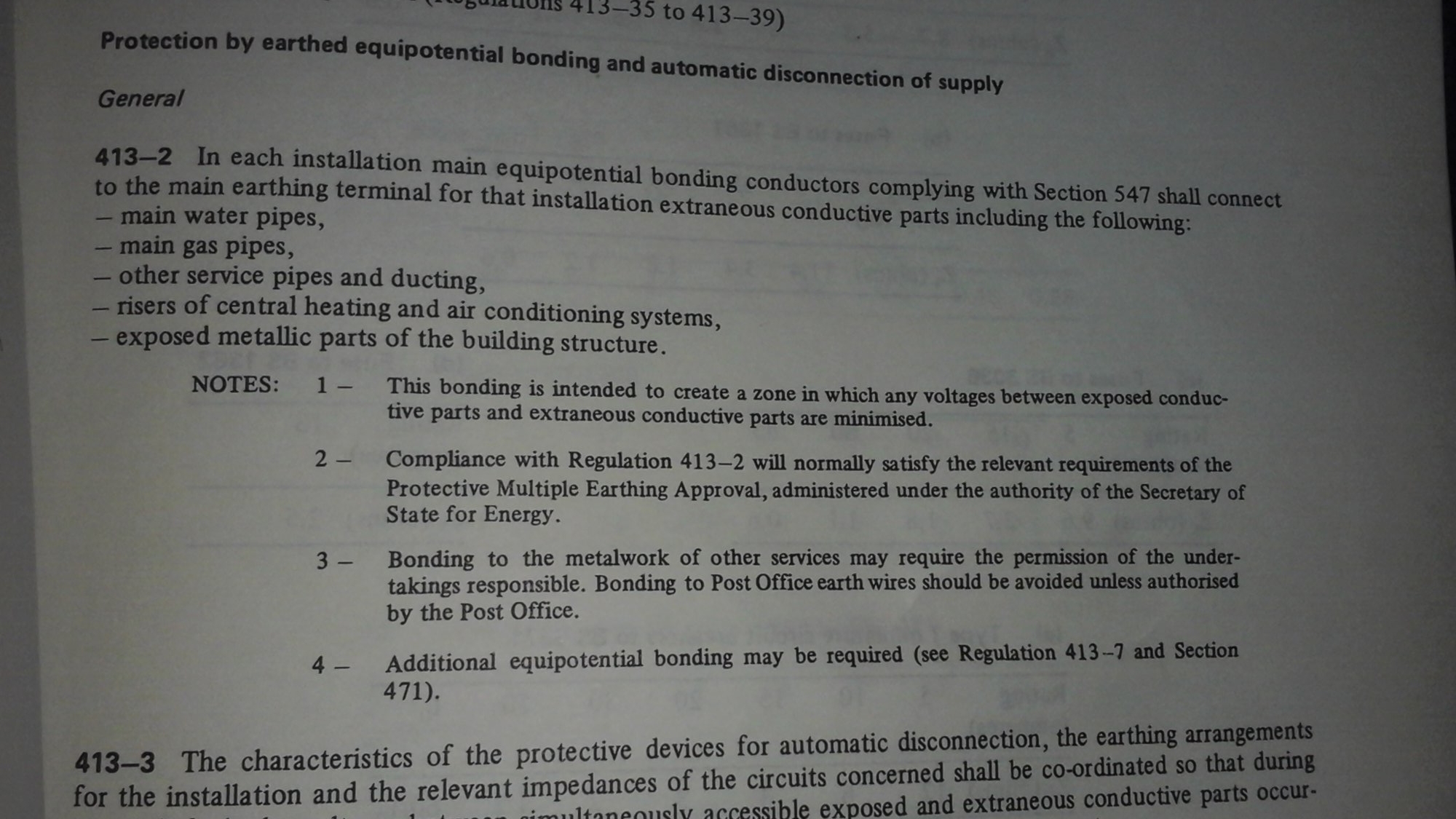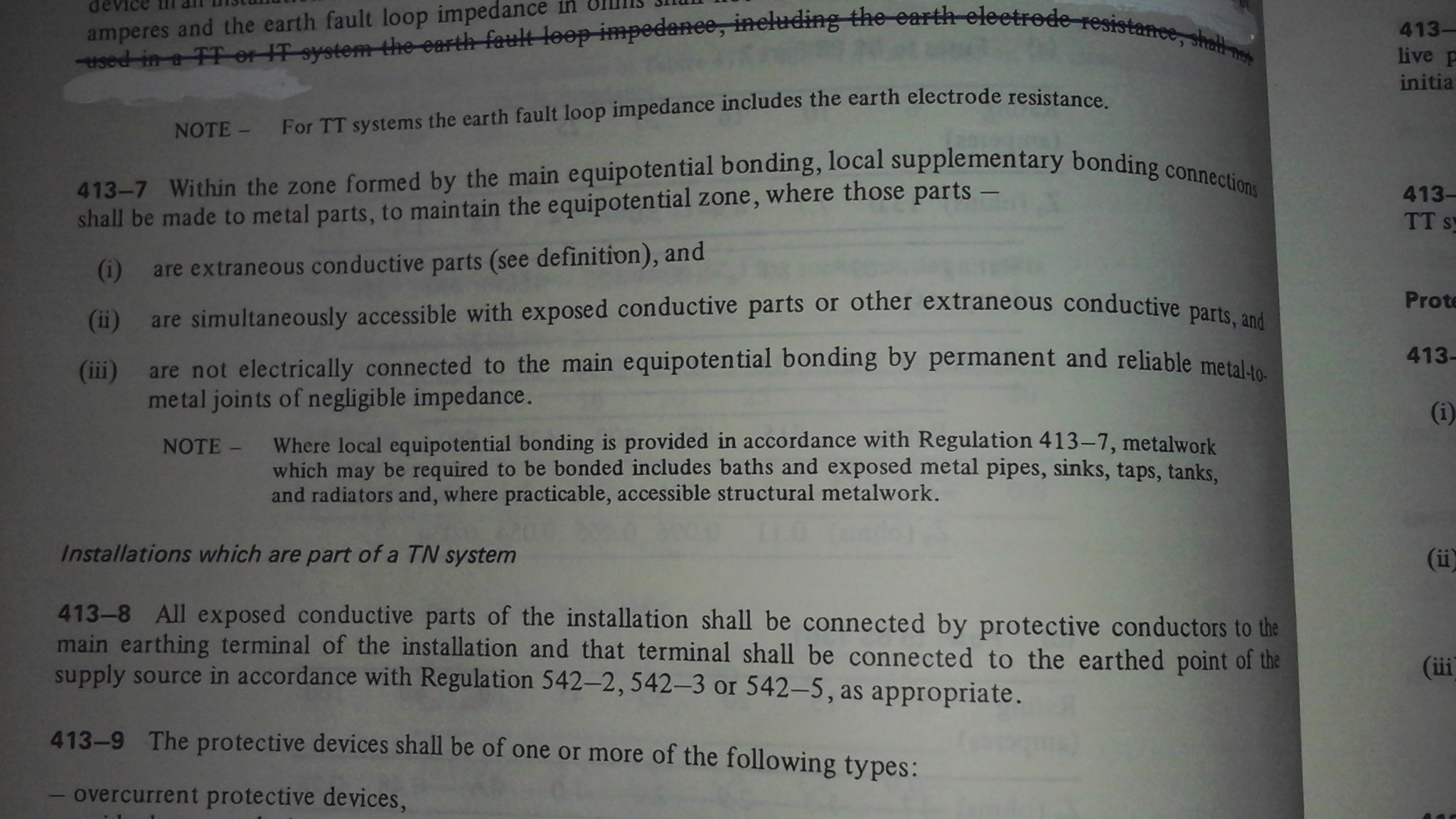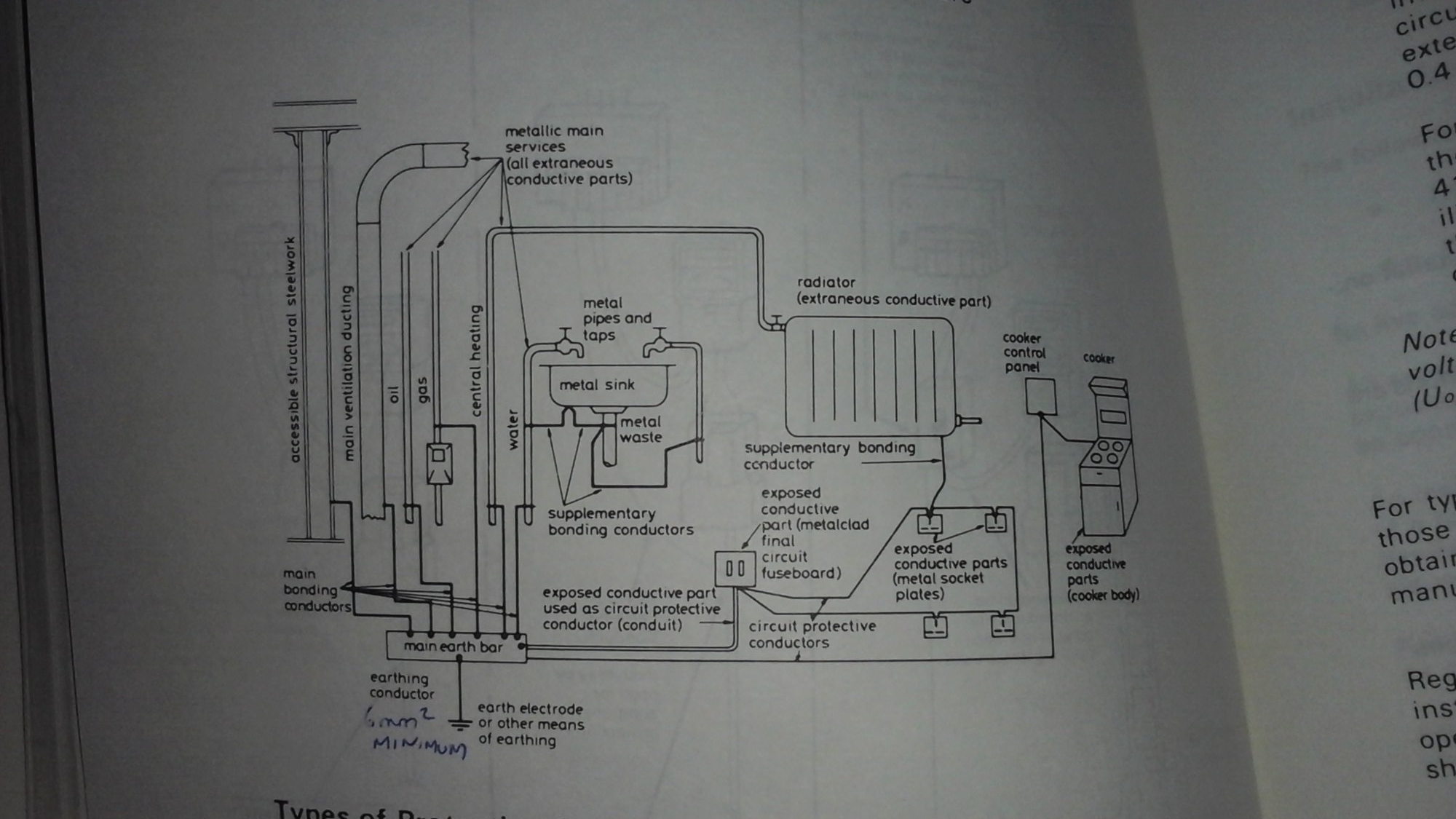Copy of the specifications requires when requesting the use of combined neutral earth earthing terminal. Note where it says:
Equipotential bonding is required between the earth conductor and the following extraneous conductive parts:
* Water installation pipes
* Gas installation pipes .....
As EFLI said about BS7671, it would be far better if they made it clear that the list (including water and gas installations pipes) is (which it is) a list of things which may (but also may not) be extraneous conductive parts, and it's only the ones which are that require bonding.
Much as I like 'vigorous debates', I'm not into hitting my head against a brick wall - so, as they say, "I'm out", at least as far as trying to find ways to help you understand are concerned.
Kind Regards, John




